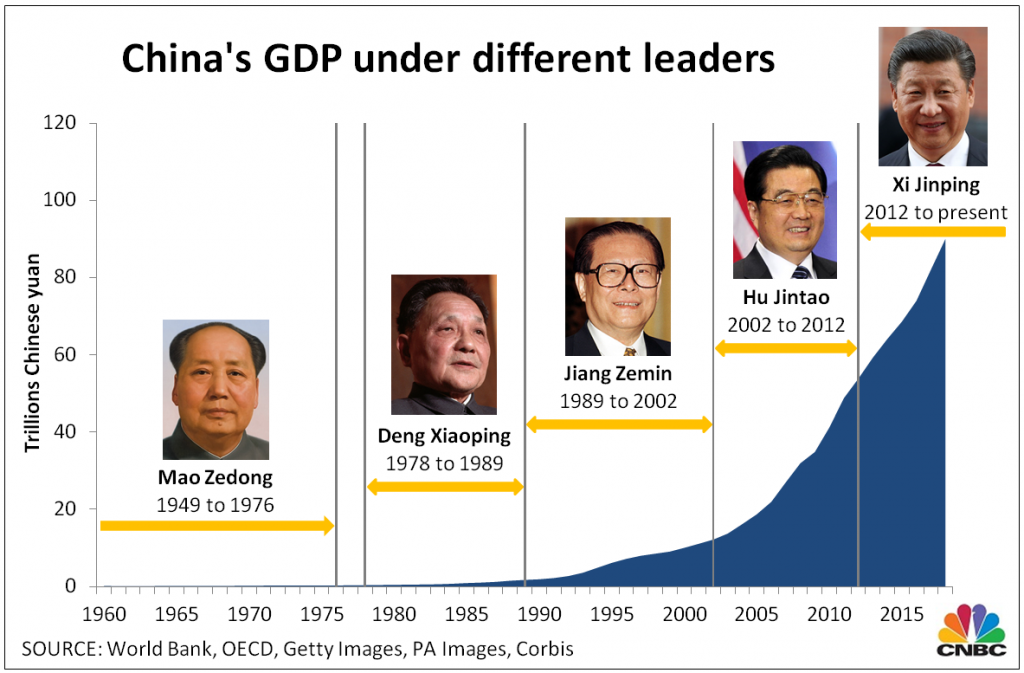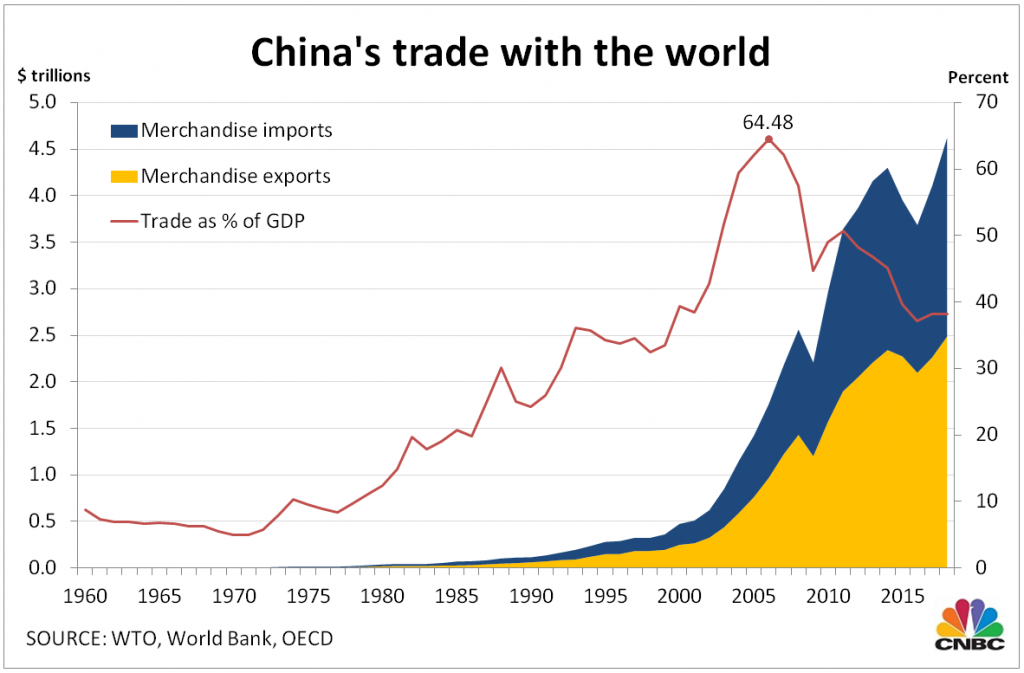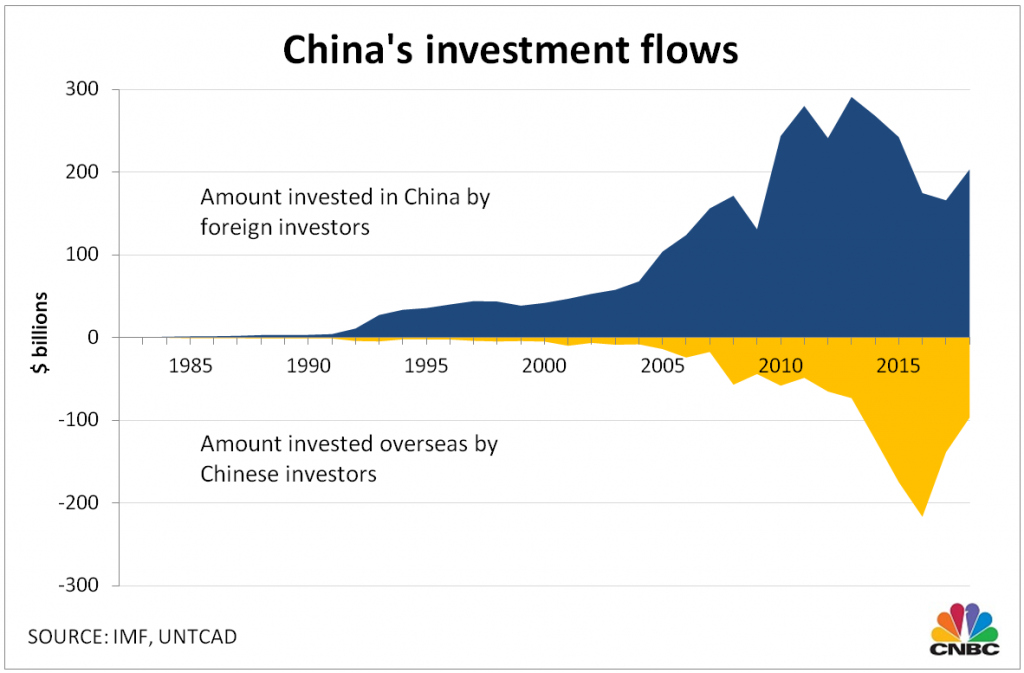Context:
President Xi Jinping has called for China to achieve “common prosperity”, seeking to narrow a yawning wealth gap that threatens the country’s economic ascent and the legitimacy of Communist Party rule.
The idea of “Common Prosperity” is a sharp escalation in official rhetoric and the recent crackdown on excesses in industries including technology and private tuition has rattled investors in the world’s second-largest economy.
Relevance:
GS-II: International Relations (India’s Neighbours, Foreign Policies Affecting India’s Interests)
Dimensions of the Article:
- Background: Understanding China’s Economic Growth
- History of the idea of “Common Prosperity”
- Recent developments in China regarding “Common Prosperity”
- How will “Common Prosperity” be achieved in China now?
- What will be the economic impact?
Background: Understanding China’s Economic Growth
1950s to mid-1970s
- China’s GDP has grown by a factor of over 1,000 since 1952, but its growth was slow from the 1950s to mid-1970s.
- The country remained relatively poor in this period, due to its backward infrastructure left by years of war as well as the inefficient planned economy and repeated political movements.
The turning point of 1978
- The country adopted sweeping reform and opening-up policies in 1978 and gradually shifted towards a market economy, beginning to unleash its full growth potential.
- China’s GDP accounted for only two percent of the world’s total in 1978. (Now, it represents around 18% of the global economy as on 2020).
- One major driver behind China’s economic rise was its massive network of factories that churned out everything from toys to mobile phones for consumers all over the world.
- China has not only become the world’s factory, but also lifted over 700 million rural residents out of poverty as the economy expanded.
- The country’s economic success has benefited greatly from a large population with relatively low labor costs and a huge market, but also an efficient and strong central government.
- China’s entry into the World Trade Organization in 2001 helped it cement its status as the world’s factory and largest trader.
- In addition to its dominance in trade, China has also grown over the years to become a major player in global investment flows.
- From 2015 to 2017, it was the world’s the second-largest source of outbound foreign direct investment and the second-largest recipient of inbound investment, according to McKinsey report.



History of the idea of “Common Prosperity”
- “Common prosperity” was first mentioned in the 1950s by Mao Zedong, founding leader of what was then an impoverished country, and repeated in the 1980s by Deng Xiaoping, who modernised an economy devastated by the Cultural Revolution.
- Deng said that allowing some people and regions to get rich first would speed up economic growth and help achieve the ultimate goal of common prosperity.
- China became an economic powerhouse under a hybrid policy of “socialism with Chinese characteristics”, but it also deepened inequality, especially between urban and rural areas, a divide that threatens social stability.
Recent developments in China regarding “Common Prosperity”
- Xi, poised to begin a third term in 2022, is turning towards inequality after concluding a campaign to eliminate absolute poverty, pledging to make “solid progress” towards common prosperity by 2035 and “basically achieve” the goal by 2050.
- The push for common prosperity has encompassed policies ranging from curbing tax evasion and limits on the hours that tech sector employees can work to bans on for-profit tutoring in core school subjects and strict limits on the time minors can spend playing video games.
- In 2021, Xi has signalled a heightened commitment to delivering common prosperity, emphasising it is not just an economic objective but core to the party’s governing foundation.
- However, it has been reiterated that “common prosperity” does not mean “killing the rich to help the poor”.
How will “Common Prosperity” be achieved in China now?
- Chinese leaders have pledged to use taxation and other income redistribution levers to expand the proportion of middle-income citizens, boost incomes of the poor, “rationally adjust excessive incomes”, and ban illegal incomes.
- Beijing has explicitly encouraged high-income firms and individuals to contribute more to society via the so-called “third distribution”, which refers to charity and donations.
- Several tech industry heavyweights have announced major charitable donations and support for disaster relief efforts. Online gaming giant Tencent Holdings has said it will spend 100 billion yuan ($15.47 billion) on common prosperity.
- Long-discussed reforms such as implementing property and inheritance taxes to tackle the wealth gap could gain new impetus, but policy insiders believe such changes are years off.
- A property tax has been discussed for years and two pilots have been implemented in Shanghai and Chongqing since 2011, but little progress has been made.
- Other measures would include improving public services and social safety net.
What will be the economic impact?
- The common prosperity goal may speed China’s economic rebalancing towards consumption driven growth to reduce reliance on exports and investment, but policies could prove damaging to growth driven by the private sector, analysts say.
- Increasing incomes and improved public services, especially in rural areas, would be positive for consumption, and a better social safety net would lower precautionary savings.
- The effort supports Xi’s “dual circulation” strategy for economic development, under which China aims to spur domestic demand, innovation and self-reliance, propelled by tensions with the United States.
-Source: Indian Express



